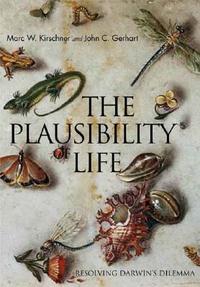This is a book I am recently immersed in.
The Plausibility of Life: Resolving Darwin’s Dilemma
by Marc W. Kirschner, John C. Gerhart
This book focuses on the evolution of organismal traits. As the subtitle represents, the authors try to resolve the evolutionary processes which neo-Darwinian theory cannot explain solely by itself. They raise a theory termed “the theory of facilitated variation”, which incorporates ideas of plasticity and robustness. And they insist that the phenotypic evolution is not a random process, because organisms can accommodate new situations using pre-existing biological systems. They called the ability to accommodate various situations as “somatic adaptability”, by which organisms can adapt unpredicted (and predicted) circumstances even without genetic changes.
I also would like to mention that plasticity of organisms are important for the evolutionary potential, i.e. evolvability, so that this book is really, very fascinating to me.
Following is the cover message of this book.
Offering daring new ideas about evolution, two highly respected biologists here tackle the central, unresolved question in the field – how have living organisms on Earth developed with such astounding variety and complexity? Marc Kirschner and John Gerhart draw on cutting-edge biological and biomedical research to provide an original solution to this longstanding puzzle.
And here is an editorial review.
From Publishers Weekly
We all know Darwin’s theory of evolution—natural selection favors some adaptations over others. But where do new adaptations come from? This problem baffled Darwin and is the main point of attack for opponents of evolution. Kirschner and Gerhart, professor at Harvard and UC-Berkeley, respectively, present their solution to the problem and take a few timely shots at the advocates of intelligent design. The key to understanding the development of complex structures, they say, is seeing that body parts as seemingly different as eyes and elbows are formed from the same basic molecular mechanisms. Thus, the authors propose, the metabolic building blocks of life functions can be rearranged and linked in novel ways with less chance of fatal variations than random mutation of DNA would allow. One piece of evidence they offer is the frequency of periods of “deep conservation” following evolutionary anatomical changes, where conventional theory would argue for continuous mutation and change. Though this seems like an elegantly simple solution, the underlying molecular biology is quite complicated. As for proponents of intelligent design, the authors say their theory turns some of their arguments on their head, converting “some of their favorite claims”—such as “irreducible complexity”—into arguments for evolution. (Oct. 19)
Copyright © Reed Business Information, a division of Reed Elsevier Inc. All rights reserved.
